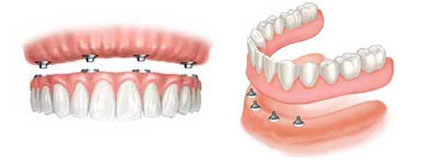Root caries has become an important dental problem because people are living longer and keeping their teeth longer. As patients grow older, their gums recede and root surfaces are exposed, making them more susceptible to root caries. Root caries can be diagnosed by a dentist during regular dental examination. X-rays are also helpful to diagnose root caries. Treatment of root caries generally requires the placement of a restoration or crown.
Dietary, oral hygiene and correct brushing advice is given. Chlorhexidine (as a mouthwash, spray, gel or varnish) is prescribed. Prescribe regimens to stimulate salivary flow, such as chewing gum, sucking sugarless candies, buffered citric/fruit acid tablets, using systemic cholinergic medications, saliva substitutes (such as gels, sprays and liquids) are advised. We recommend review of patients on a schedule appropriate to their level of risk.
Dentures replace the missing teeth allowing the patient to chew food, restore the esthetics, support all the facial soft tissues, including the lips and cheeks, and reestablish the vertical dimension of bite (the distance between your chin and nose). Dentures also aid in speaking, swallowing and smiling.
Dentures become ill fitting over time because in the absence of any teeth the body continually resorbs the jawbone making it smaller, weaker and more susceptible to fractures. To minimize these adverse effects there are several treatments that we offer. The first is to save any existing teeth or root tips that can be used as anchors to attach an over denture. Root canals allow the remaining teeth or root tips to be saved and used for the anchor part of attachments for an over denture. This gives the denture something to attach to and consequently increases the denture's retention ten fold or more depending on the number of teeth and the type of attachments used. The presence of the teeth or root tips also helps to preserve the level of jawbone, which also improves the fit of the denture.
Implants can be used as anchors for the dentures when there are no teeth or root tips. Implants have the multiple functions of improving the retention and fit of the dentures while preserving the jaw bone of the patient.

The most fundamental denture attached to implants utilizes both 2 to 4 implants and the patients gum tissue to retain the denture. These restorations are called implant and tissue retained over dentures and usually employ attachments that are magnets or ball and sockets. The second level denture is totally implant retained and utilizes the patient gum tissue only for support. These are called implant retained tissue supported over dentures and usually employ 4 implants and an anterior fixed bar that is connected to the implants and which the over denture clasps onto. The third and best level of over dentures is completely implant retained and implanted supported thereby eliminating any need to use the patient's gum tissue for either support or retention. These over dentures typically employ 6 to 8 implants that are connected by a fixed bar that is nearly the entire length of the denture and to which the denture attaches to. These fixed bars can be either a round bar or for the best of the best a milled bar or spark erosion bar. These last two dentures give the greatest retention, stability and bone preservation.

